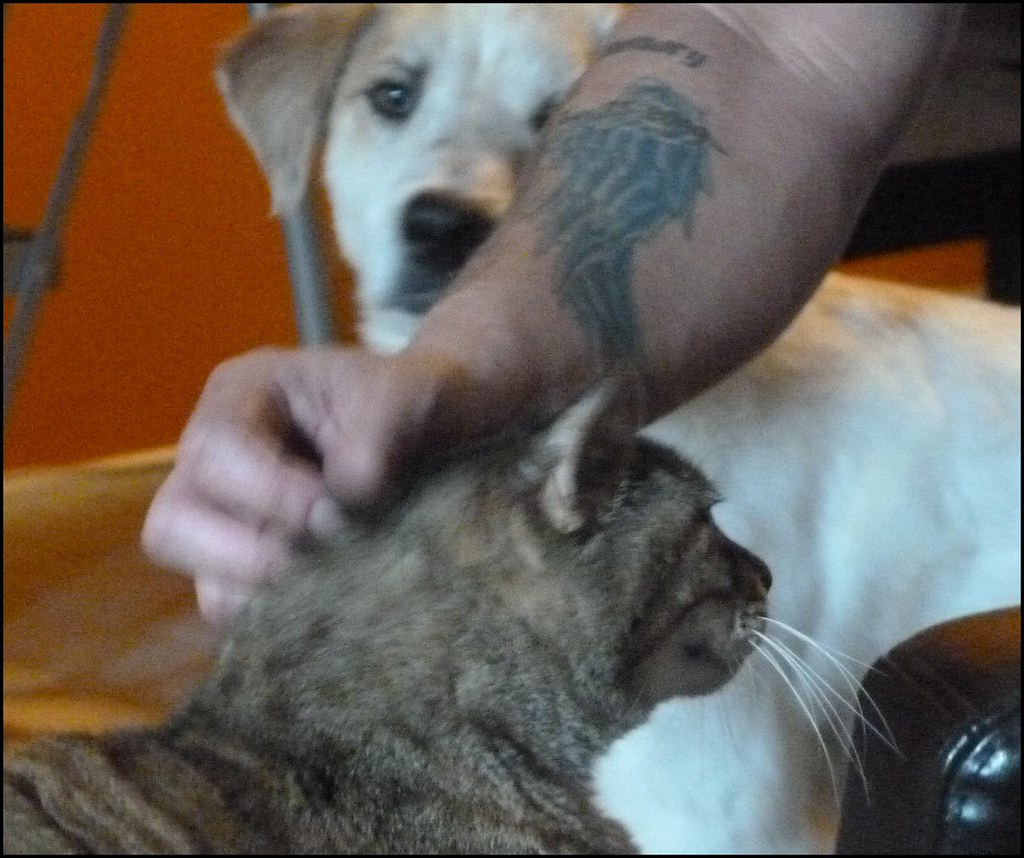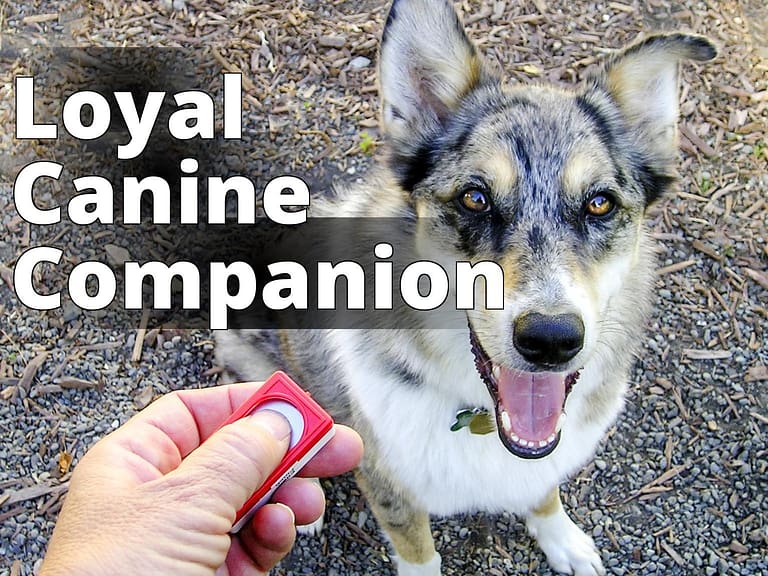Harmony at Home: Power-Packed Dogs that Get on with Cats
If you’re a pet owner who has both dogs and cats, you know how important it is for your furry friends to get along. However, not all dogs and cats are natural companions, and introducing them can result in chaos. But fear not! There are certain dog breeds that have the potential to get along with cats better than others. In this blog post, we’ll explore some of the power-packed dogs that may surprise you with their ability to peacefully coexist with feline friends. So if you want harmony at home, keep reading!

Understanding the Dynamics of Dogs and Cats Living Together
Dogs and cats are often seen as two species that just don’t get along. However, with some careful planning and a bit of patience, it’s possible for them to live happily together in the same home. Understanding the dynamics between these two animals is crucial before introducing them to each other. Dogs are naturally curious creatures that may see cats as prey or competition, while cats are more territorial and may feel threatened by a new dog entering their space.
It’s important to remember that both dogs and cats have unique personalities, so compatibility can vary depending on the individuals involved. Some dogs have a high prey drive which makes them unsuitable for living with cats; others have gentle temperaments that make them ideal companions.
Before bringing a new pet into your home, it’s essential to consider your current animal’s personality and behavior towards other animals. It’s also advisable to seek advice from professionals such as veterinarians or animal behaviorists who can provide guidance during the introduction process. Taking time in advance will help create harmony at home when bringing dogs that get on with cats together.
Top 5 Dog Breeds that are Compatible with Cats
Dogs that get on with cats are typically those breeds that have a low prey drive and a calm temperament. First, the Bichon Frise is an excellent choice for cat lovers because of its friendly nature and non-aggressive behavior towards other animals. Second, the Cavalier King Charles Spaniel has been known to be compatible with felines due to their affectionate disposition and gentle personality. Third, the Maltese breed’s small size makes them less intimidating to cats while their playful yet gentle nature helps them bond well with feline friends. Fourth, the Beagle may surprise you as they were originally bred for hunting but they possess great social skills which make them ideal housemates particularly when raised together with cats from an early age. Fifth, The Golden Retriever’s loving nature often extends beyond humans; it is patient and can coexist peacefully even in houses where there are multiple pets including cats.

How to Introduce a New Dog to Your Cat: Tips and Tricks
Introducing a new dog to your cat can be a daunting task, but with patience and the right approach, it can be a smooth process. The first step is to keep the new dog and cat separated for a few days, allowing them to get used to each other’s scent. When it’s time for them to meet, keep the dog on a leash and allow the cat to approach at their own pace. It’s important to supervise their interactions and never force them together. Positive reinforcement is key, so reward both animals for good behavior and avoid punishing them for any negative interactions. It may take some time for them to become comfortable around each other, so be patient and take things slow. If there are any signs of aggression or discomfort, separate them immediately and try again later. With patience and persistence, your dog and cat can form a happy and harmonious relationship.

Signs of a Healthy Relationship between Dogs and Cats
Body Language: Understanding the
Body Language: Understanding the Relationship between Dogs and Cats
When dogs and cats are getting along, there are several signs that indicate a healthy relationship. One key indicator is when the dog and cat are comfortable being in close proximity to each other without any signs of aggression or fear. Another important sign is when they engage in play or grooming behaviors together. Dogs that get on with cats will often display submissive body language, such as lowering their head or wagging their tail slowly, while cats may approach the dog with a relaxed body posture and tail held high. It’s important to note that each animal has its own unique personality, so it’s essential to observe their behavior over time to ensure a harmonious relationship.
Tips for Building Positive Interactions between your Feline and Canine Companions
One of the key factors in ensuring a healthy relationship between dogs and cats is building positive interactions from the start. This can be achieved by providing each pet with their own space, toys, and food bowls. Supervision during initial introductions is crucial to prevent any negative behaviors such as aggression or fear.
You can also encourage socialization by playing games together and rewarding good behavior with treats. It’s important to allow both pets time to adjust and establish their own boundaries before expecting them to become best friends.
Remember that every dog and cat has their unique personality, so it may take time for them to warm up to each other. However, with patience and consistent positive reinforcement, you can foster a harmonious environment where your feline and canine companions coexist happily together.
Common Mistakes to Avoid when Introducing Dogs and Cats to Each Other
When introducing a new dog to your cat, it is important to avoid common mistakes that can lead to a strained relationship. One mistake is forcing interaction too soon. Let the pets sniff each other from afar and keep them separated until they are both comfortable. Another mistake is not providing enough resources such as food bowls and litter boxes, causing competition and tension between pets. Remember to supervise interactions and praise positive behavior with treats or toys. By avoiding these mistakes and allowing for a gradual introduction process, dogs that get on with cats will have an even better chance at forming a healthy relationship.
Creating a Peaceful Home Environment for Your Multispecies Household
The key to maintaining a healthy relationship between dogs and cats lies in creating an environment where both animals feel secure and comfortable. Some signs of a successful multispecies household include mutual grooming between the dog and cat, sharing space without conflict or territorial behavior, and playfulness together. It’s important to provide separate spaces for each pet, such as designated feeding areas and sleeping spots. Supervision during interactions is essential until you’re confident that your pets have established positive communication with one another. Finally, don’t forget plenty of praise and rewards for good behavior – reinforcing positive actions helps to build trust between your furry friends!

Common Misconceptions about Dogs and Cats Living Together
Myths about Dog-Cat Relationships Debunked
Contrary to popular belief, dogs and cats can actually get along well. One of the biggest misconceptions is that dogs are natural predators and will harm cats. However, many dog breeds have a gentle nature and can be trained to coexist peacefully with cats. Another myth is that cats are always afraid of dogs and will never warm up to them. In reality, cats are curious creatures and may even initiate play with a friendly dog. It’s important to remember that each animal has its own personality and temperament, so it’s not fair to generalize all dogs or cats as being incompatible with each other.
Understanding the Dynamics of a Multi-Pet Household
Dogs and cats have a reputation for being natural enemies, but this is not entirely true. Understanding the dynamics of a multi-pet household is crucial to ensuring that dogs and cats can coexist peacefully. It’s important to remember that each animal has its own personality and preferences, so there is no one-size-fits-all approach to introducing them. Dogs are pack animals and may see the cat as a member of their pack, while cats are solitary creatures who may view the dog as a threat. However, with proper training, socialization, and supervision, dogs and cats can learn to live together harmoniously.
How to Introduce Your Dog and Cat: Step-by-Step Guide
Introducing your dog and cat is a crucial step towards ensuring a peaceful coexistence. Patience and preparation are key when introducing your pets. Start by keeping them in separate rooms and gradually introduce them through scent swapping. This involves swapping their bedding or toys so they can get used to each other’s scent. Once they seem comfortable with each other’s scent, you can introduce them through a baby gate or a crate. Always supervise their interactions and reward good behavior with treats and praise. Remember, every pet is unique, so it may take some time for them to get along. Don’t rush the process and always prioritize their safety.
Getting Along Purrfectly: Tips for Maintaining Harmony at Home
Cats and dogs living together in harmony is often perceived as an impossible feat. However, this couldn’t be further from the truth! With proper supervision and training, dogs and cats can form strong bonds and live together peacefully. The key is to understand their unique personalities, behaviors, and body language. Here are some tips for maintaining a harmonious household: provide separate spaces for each pet to eat, sleep, play; supervise their interactions until trust is established; train your dog with basic obedience commands such as “leave it” or “stay”; reward good behavior with treats or praise. Remember that patience is key – it may take time for your pets to adjust to each other’s presence but the end result will be worth it!

Maintaining Peaceful Coexistence: Tips for Keeping Dogs and Cats Happy at Home
Maintaining Peaceful Coexistence between dogs and cats in a home can take effort, but it is entirely possible. Firstly, ensure that each animal has its own space to retreat to when they need some alone time. This could be as simple as two separate beds or litter trays in different parts of the house.
Secondly, training your dog is essential. Dogs should understand basic commands such as “leave it” or “stay”, especially when interacting with cats. Rewarding them for calm behavior around the cat will reinforce positive habits.
It’s also important to provide enrichment activities for both animals separately and together, such as playtime or puzzles. This not only keeps them mentally stimulated but helps strengthen their bond.
In addition, keeping up with regular vet check-ups ensures that any health issues are addressed promptly and preventatively – this includes vaccinations against diseases they may pick up from one another.
Lastly, remember patience is key! Even if you have taken all necessary precautions above, there may still be an adjustment period where they get used to each other’s quirks – stay consistent in your training methods and always observe their interactions closely before leaving them unsupervised together at home.
In conclusion, the idea that dogs and cats can’t live together peacefully is nothing more than a myth. With the right approach, preparation and patience, it’s easy to create harmonic relationships between your furry friends. By understanding the dynamics of their behavior, choosing compatible breeds, introducing new pets properly and maintaining a happy coexistence at home, you can ensure healthy friendships between your dogs and cats. Don’t let this misconception stop you from welcoming both pets into your family! If you’re looking for pet supplies or accessories to help make life easier for everyone in your household, visit our online shop today!
Frequently Asked Questions
Question: Who are the best dogs that get on with cats?
Answer: Breeds like Golden Retrievers, Labs, and Beagles are known for their cat-friendly temperament.
Question: What should I do if my dog doesn’t get along with my cat?
Answer: Keep them separated and slowly introduce them to each other while closely supervising their interactions.
Question: How can I train my dog to get along with cats?
Answer: Train your dog to obey basic commands like “sit” and “stay” and reward them for good behavior around the cat.
Question: Who should I consult if my dog and cat still don’t get along?
Answer: Talk to a professional dog trainer or behaviorist who can assess the situation and offer personalized advice.
Question: What if my cat is the one that doesn’t get along with dogs?
Answer: Make sure your cat has a safe space to retreat to and gradually introduce them to the dog while rewarding good behavior.
Question: How long does it take for a dog to get used to living with cats?
Answer: It varies depending on the dog’s temperament and the cat’s behavior, but it can take anywhere from a few days to several weeks.




Leave a Reply